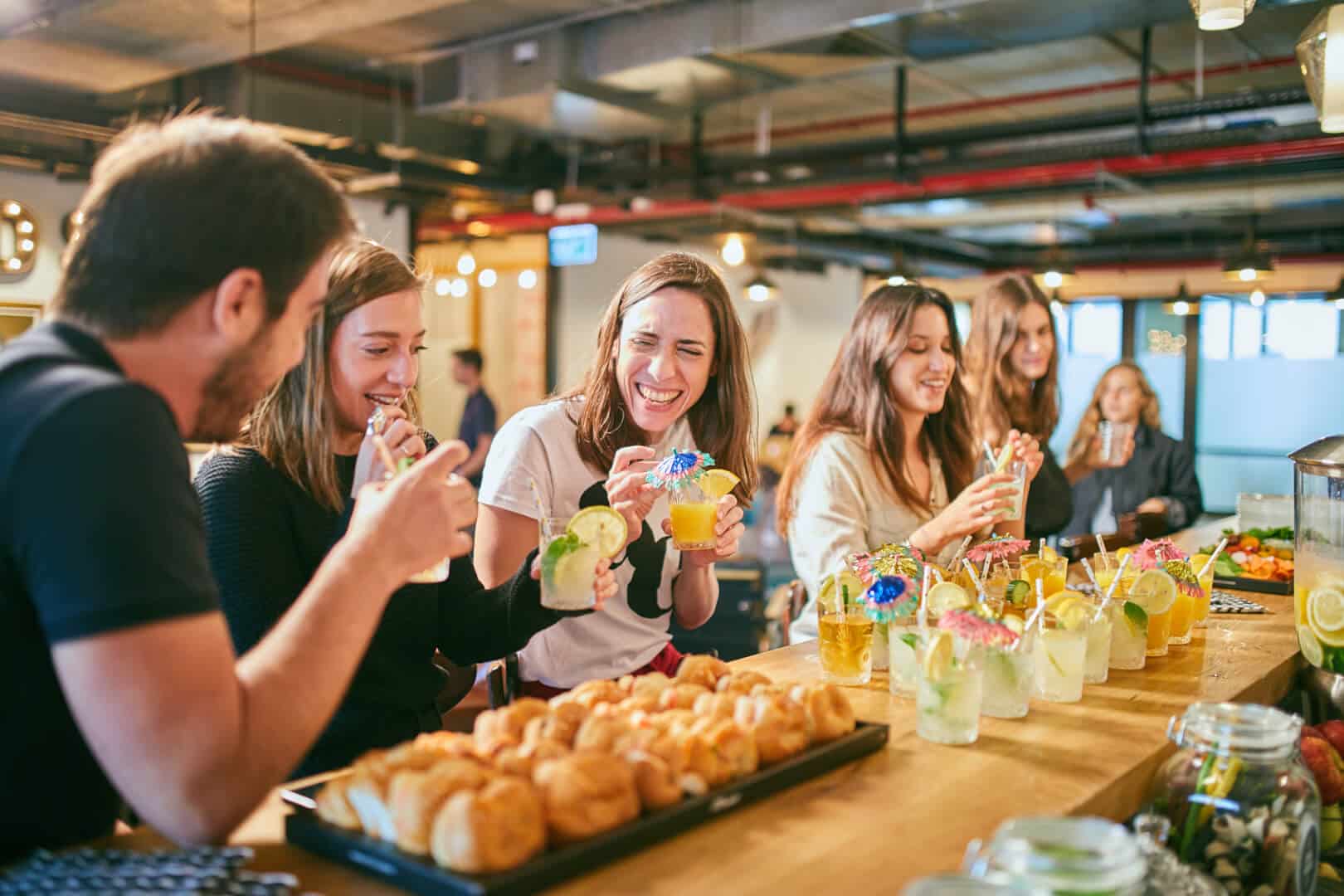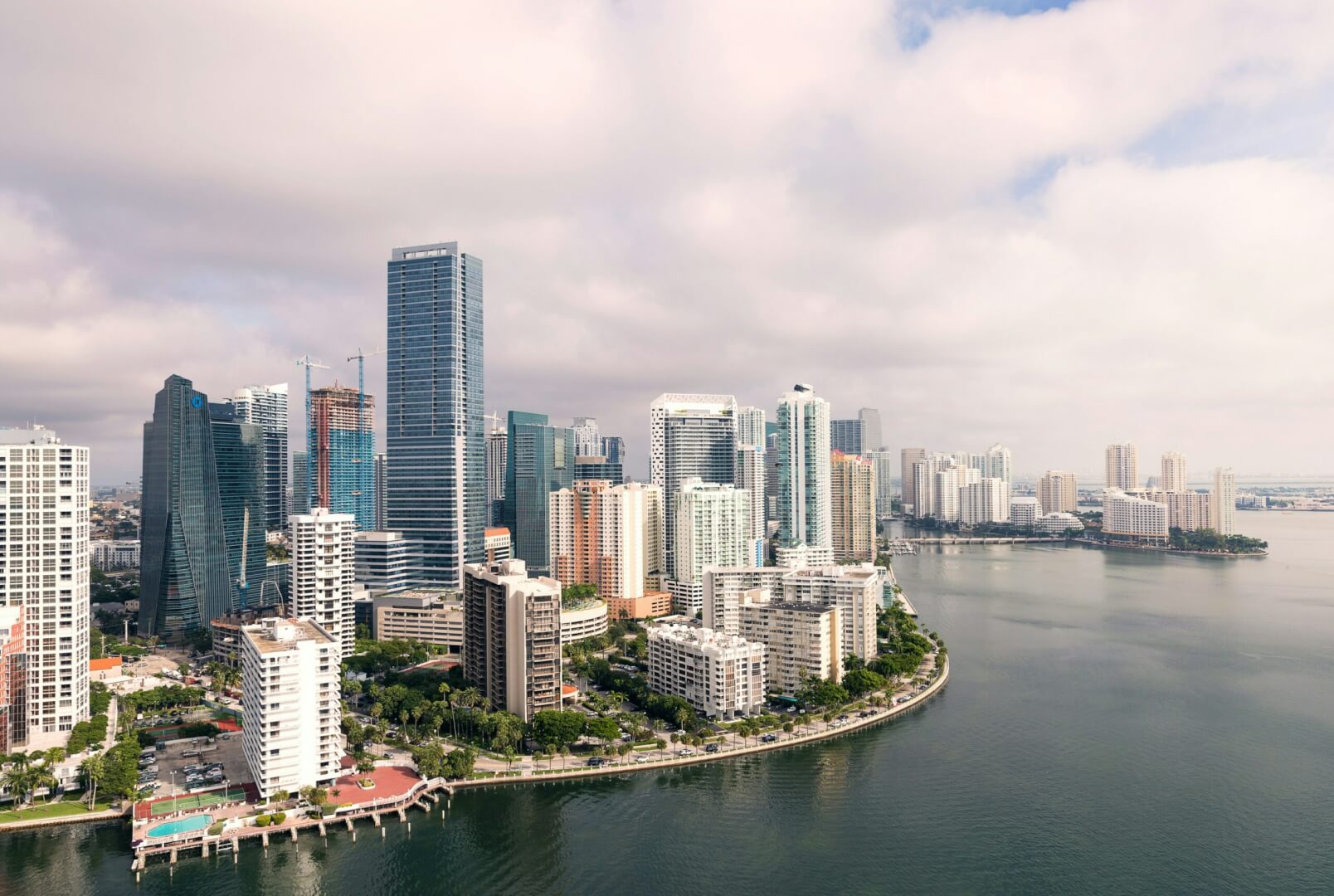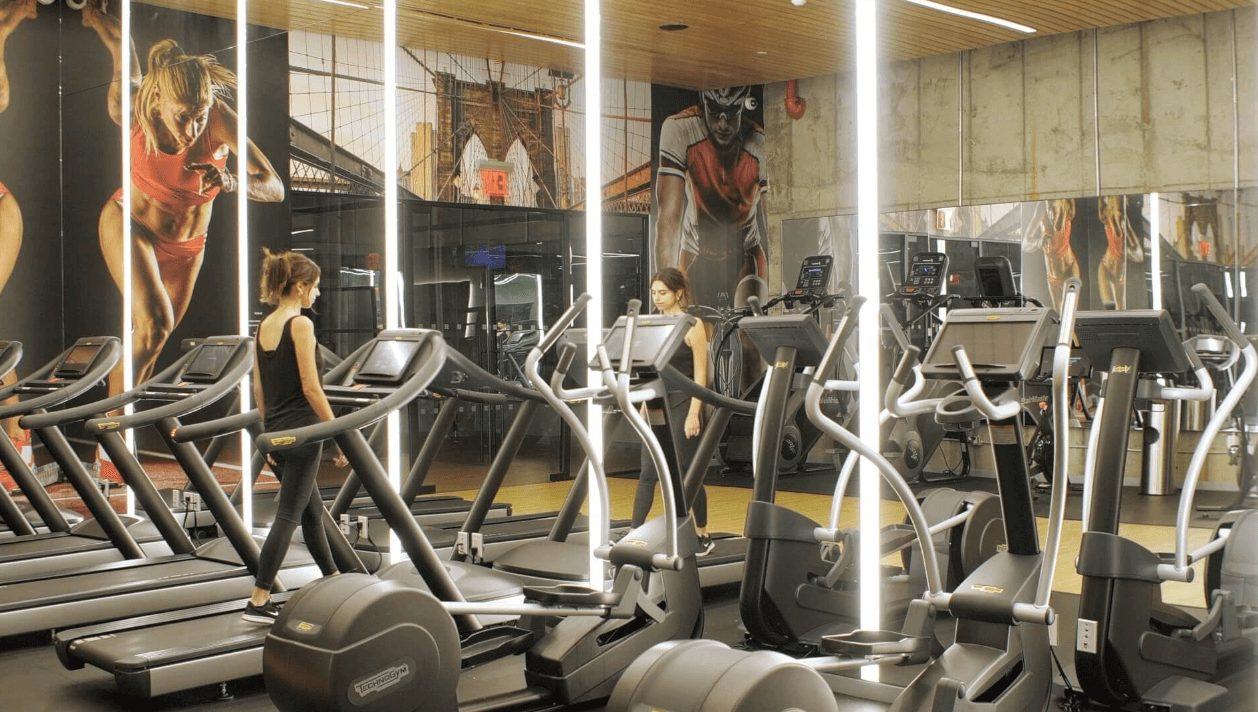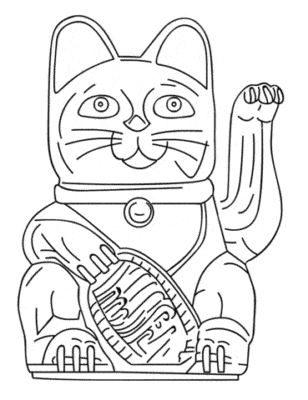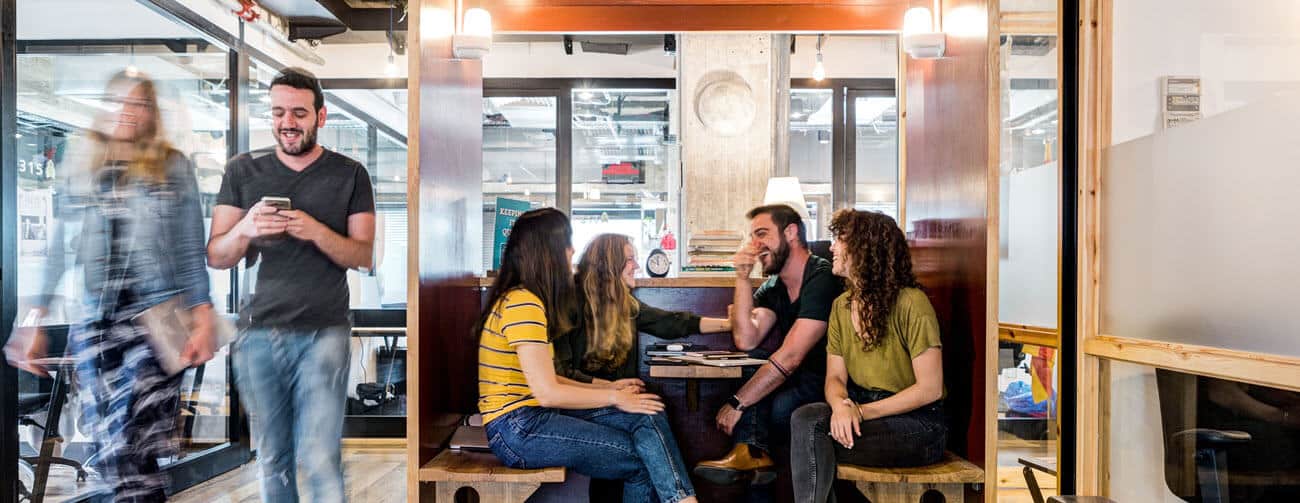
Happy Employees, Happy Company
Creating the right space for employees to feel happy, engaged and productive.
From office design that encourages productivity to well-being and company culture, coworking offers a unique blend of ingredients for fostering employee happiness in the contemporary workplace.
It’s no secret that employee happiness leads to greater levels of productivity, innovation and retention. So, what is it that empowers workers to feel happy at work? There is no single factor in the quest to boost employee happiness. We’ve broken down some of the most important elements in nurturing a positive work environment and highlighted how the concept of design thinking can be a true game-changer.
The process of design thinking urges us to ask “why?”.
It encourages the creation of an environment that will engage, inspire and motivate teams, based on studying the needs of individuals. So, why is interior design is important for office environments?As a leading designer of flex office and co-working facilities worldwide, from offices in London to coworking spaces in Miami, our team has learned that fervent research into worker psychology — how they achieve greatness and what their precise professional wishes are — can be a key to creating a stimulating and happy work environment for employees and clients.
A design mindset is not problem-focused; it is solution-focused and encompasses fully understanding and empathizing with end-users, challenging assumptions and creating innovative solutions that you can prototype and test. Much like coworking itself, it has become a permanent fixture that is redefining work processes for companies of all shapes and sizes.
The most innovative companies in the world employ design thinking as an integrative resource that makes them innovate most efficiently and successfully.
The DMI Design Value Index revealed that over the previous 10 years design-led companies maintained a significant stock market advantage, outperforming the S&P by an amazing 228%. Workplaces that are motivated by design thinking produce loyal, happy and dedicated employees who are inspired to reinvent themselves every day and to innovate like never before.
The overall value of design is hard to measure and define as a business strategy. Most businesses don’t engage in the effort to make their spaces look fabulous, but design thinkers use a structured framework for understanding and pursuing innovation in ways that add real value. It involves looking at the physical space and asking questions about what people need and thinking outside of the box to find solutions.
Co-working spaces typically strive to provide an environment that is both a real estate and human resources solution. As opposed to just providing a place to work, co-working brings together beautiful design, customer service, IT and wellbeing – all rolled into one workplace solution. While office design is generally driven from a place of revenue and profit interest, flex office providers like Mindspace are concerned with a deep understanding of key stakeholder needs.
So by taking a design thinking approach, how do you incorporate worker needs and create the optimum work environment for employee happiness?
The physical space
What makes a great office design is a hot topic, proven to influence company reputation, employee retention, and recruitment. But in many cases, creativity goes overboard and companies are left with eye-catching office chairs that are very awkward to sit on. Design trade-offs are making their way into the workplace due to macro-trends that pay little heed to genuine workplace needs. The role of interior design in today’s offices is crucial. New, futuristic office design may garner quick wins for companies that are looking to mask old-fashioned real estate solutions but, in reality, conceptual desks, plastic dividers, slides, and disco meeting rooms run dry rather quickly.
The basis of today’s traditional office design is often rooted in the perusal of hip office furniture catalogs and the implementation of novel, but not necessarily desirable, amenities. While these examples do represent design measures intended to inspire workers, they do not represent design thinking. The process of design thinking embodies a holistic view of a human-centered workspace, drawing upon logic, imagination, intuition, and systematic reasoning to explore the limits and possibilities of the intangible ‘feel’ of an office.
For those considering a redesign of their space, it is important to build an environment that can create a culturally inspired atmosphere that is professional and uplifting. Art is the cornerstone of design thinking, and in the workplace, it defines the attitude and character of the brand, as well as the atmosphere it aims to create. At Mindspace, we achieve this by researching and partnering with local artists to curate a balance of both lighthearted and thought-provoking pieces to exhibit throughout the site. While critical art is stimulating and requires deep interpretation, the juxtaposition of tongue-in-cheek creations reminds team members to have a good time. Take a look at our Shoreditch coworking space or the office space in Brooklyn to see what we’re talking about.
Space for values
The needs of workers extend beyond feeling inspired and connected to the physical space they work in. Research shows that workers who feel connected to the values and mission of a company have greater employee engagement and productivity. A company with a set of clearly defined values will attract workers who share in these, helping create intrinsic motivation, a necessary component for higher productivity, lower absenteeism and killer creativity. Incorporating ways to boost productivity with office design, such as fostering a sense of purpose and community through shared values, can further enhance the overall work environment and drive employee performance. As Starbucks CEO Howard Schultz once stated: “When you’re surrounded by people who share a passionate commitment around a common purpose, anything is possible.”
Space for growth
Open space can be fun. Many of our global offices are kitted out with swings, bean bags, dens, secret hideouts, private booths, and more. All this is great for creativity, company culture and employee happiness. However, employees need more than an innovative and playful physical office space to truly invest their future in a company. There needs to be room for career growth. Encouraging professional development through training opportunities, mentoring, business trips and skill-building helps employees feel more positive about their work.
There also needs to be plenty of scope for work-life balance – a vital need for workers in today’s stressful work climate. This requires providing more than the rooftop spaces, yoga studios and chill-out zones of co-working offices. It’s really about building a caring company culture that is in tune with its employees’ well-being – offering adequate time off and other mental health support to prevent worker burnout and promote employee happiness.
Loving your work goes a long way — but the right environment and commitment to personal growth encourage workers to be more devoted and positions a company to attract the finest talent.
Space for community
Contrary to popular belief, the new age of coworking is not about open space. It’s a shared working environment with private offices, hot desks, and meeting rooms where teams can focus and still have access to shared spaces and community right outside their door. Diversifying working life with a dynamic physical environment can have a positive impact on productivity, and it’s also wonderful for people who work late and may need to shake things up. While the physical office space helps reduce worker isolation experienced by remote or hybrid workers, a sense of community helps address the issue of representative isolation – where a worker feels they have few peers that they can identify with.
Working with people from different ethnic backgrounds and socio-economic experiences is both an important element for a company’s design thinking and a critical aspect for enriching company culture. Each of the Mindspace flex office spaces around the world provides access to a diverse community of entrepreneurs, designers and free thinkers that help contribute to company culture, people diversity and creativity.
Space for trust
Workers need more than a safe physical space. They need an environment that nurtures trust and meritocracy. Recognizing hard work and acknowledging accomplishments go a long way towards building a positive work environment that breeds employee trust. There are so many ways that companies can incorporate this into their daily operations. From holding group lunches and awarding prime parking spots to giving extra days off or public awards, workers feel extra validation and motivation – showing that good leadership has a direct impact on employee engagement and happiness.
Design thinking is for everyone, not just for designers
Product managers, CEOs, HR managers, marketing gurus, entrepreneurs – everyone can adopt a human-centered approach to finding solutions. If you’re looking for a new office space for your company or team, consider the true needs of your people as a first step and how a co-working space can help address them.
Innovative and flexible office design (which you can find at our coworking spaces in Downtown Miami and beyond) certainly acts as a foundation for growth and creativity, while empathetic leadership and a sense of community transform the workplace into a space for belonging, purpose, and happiness for employees.


